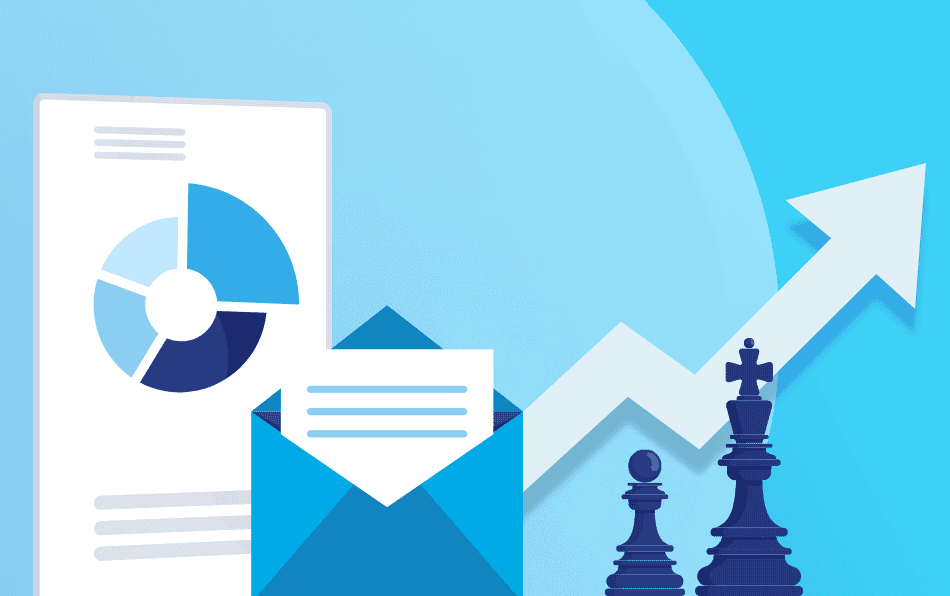Subscribe to Our Newsletter
Stay updated with the latest tips and strategies. Get additional discounts and alerts on offers.

Are you tired of seeing poor engagement and conversion rates in your email campaigns? This might be due to lack of segmentation in your email marketing strategies.
Segmentation is the most effective way to target customers based on their unique preferences and needs, which helps you to enhance conversion rates. Companies around the world are increasingly adopting segmentation to connect with customers more effortlessly.
Starbucks, the popular global coffee chain, has successfully introduced customer segmentation based on beverage preferences, resulting in increased client satisfaction, sales and ROI.
The following article explains the different types of advanced email segmentation strategies for streamlining your revenue returns.
Let’s get started!
Email segmentation is the division of email list based on subscriber’s specific criteria such as age, gender, location, purchasing pattern, behavior, website engagement, browsing activity, and more.
This strategy will help you personalize your marketing emails to resonate perfectly with your customers’ unique interests, needs, and preferences.
By sending relevant messages to the right business owners, you can achieve significant conversions, leading to substantial revenue and ROI.

Demographic segmentation involves grouping customer contact lists based on age, gender, job title, education level, and more.
This approach is one of the most direct ways to classify prospects based on their decision making nature and product preferences.
Executives and purchasing authorities within a company differ in age, gender, job roles, and more. While sending the same emails to everyone might seem easy, it often leads to poor conversions.
However, with demographic segmentation, you can personalize your advertising content to resonate with your audience’s specific needs and preferences, boosting your response and engagement rates.
For example, your promotional emails that attract millennial decision makers may not be found interesting to Gen-z.

This type of segmentation involves dividing the audience based on website interaction, purchasing history, email engagement, buying patterns, and more.
Behavioral segmentation offers valuable insights such as customer activity with your business. By analyzing a customer’s previous buying patterns, you can predict the future purchasing behaviors, allowing companies to promote their products and services more effectively.
For instance, sending substantial discounts, offers, or deals to customers with high email engagement rates will help drive conversions.
Here are some examples of behavioral segmentation:

The term ‘geographic segmentation’ itself describes the process of categorizing customers by specific location, country, state, city, area, and more.
This type of segmentation can be highly impactful for locale-specific campaigns. By understanding the geographical region of your targeted prospects, you can personalize your promotional messages effortlessly, leading to higher engagement rates and conversions.
If you are running a textile export business, sending marketing emails about winter season offers will work for European retailers than for those in the Middle East.

RFM refers to – Recency, Frequency, and Monetary value. It is an effective marketing technique to find potential customers based on the following three metrics:
For example, consider a company that sells gateway payment software to e-commerce retail businesses. The company uses a RFM segmentation strategy to classify its customers as follows:
By analyzing these metrics, the company can segment email lists to target high frequent and high value prospects with exclusive deals, offers, upselling and cross-selling strategy. While developing an effective re-engagement strategy for less recent and less frequent clients to boost sales.

Firmographics segmentation involves grouping companies based on specific attributes, such as:
This type of segmentation helps you refine the customers based on financial capabilities, business size, industry values for deeper market penetration.
For instance, a company that sells cloud-based HR software might use firmographic segmentation to target its customers as follows:
Firmographics segmentation allows businesses to personalize their marketing efforts to the specific needs and preferences of their targeted clients, boosting conversions and revenue returns.
There are several benefits from email segmentation strategies, including:
Now that you understand how segmentation can offer endless possibilities for reaching a focused audience for effective sales and conversions, it is important to note that manually segmenting an email list takes significant time and effort.
Even if you manage to segment the list manually, it often leads to human errors, inadequate personalization, inconsistencies, challenges in data integration, and more.
That is where a reliable B2B data service provider such as DataCaptive comes into play. DataCaptive offers an email list with 10+ segmentation options and 40+ customizable data attributes to precisely match your ideal customer profile, simplifying your email marketing efforts and boosting your sales and ROI.
There are various advanced email segmentation strategies that can personalize your outreach efforts for substantial campaign outcomes. Incorporating these strategies into your marketing approach can lead to higher engagement, better deliverability, low unsubscribe rates, increased conversion rates, and more.
However, manual segmentation of an email list can be challenging, time consuming, often leading to human errors and inconsistencies. With DataCaptive’s email list, you can overcome these challenges. They offer 10+ segmentation options to simplify your targeting efforts.
Get a Sample Email List
Show Some Love!

Subscribe to Our Newsletter
Stay updated with the latest tips and strategies. Get additional discounts and alerts on offers.
Related Articles
Subscribe to Newsletter
Stay up to date with the latest marketing, sales, and service tips and news.
Limited Time! Celebrate the spirit of freedom with 30% OFF on all B2B databases.
Unlock high-quality leads and drive your campaigns further with accurate, verified data trusted by thousands of businesses.
Don’t miss out—power up your marketing while the offer lasts!
